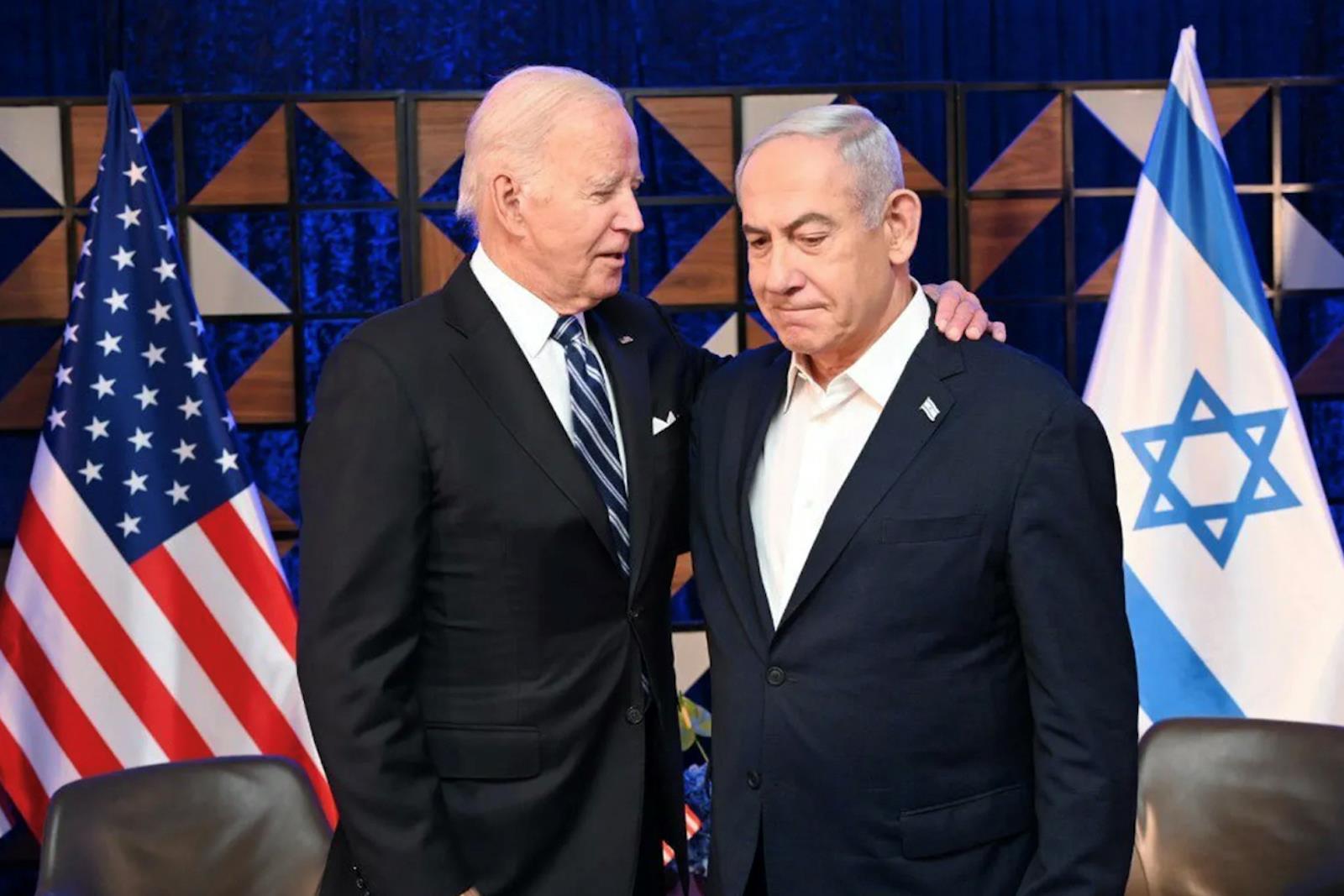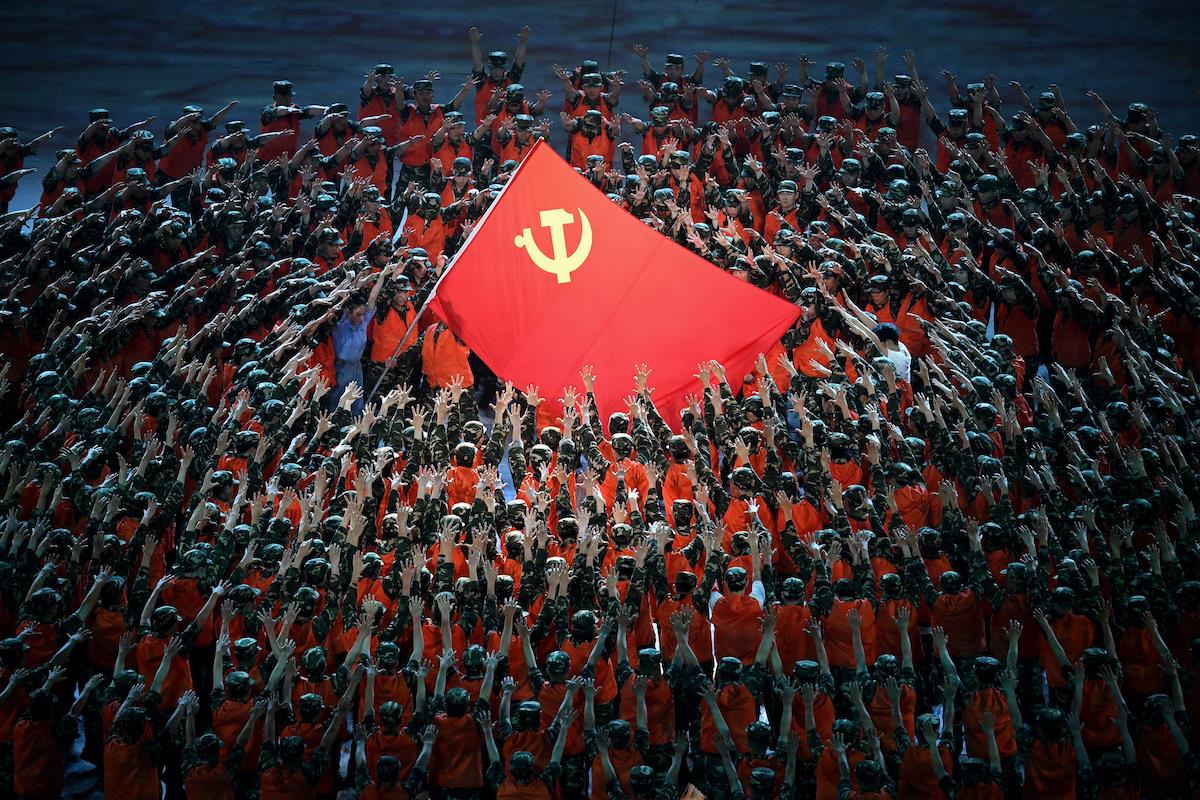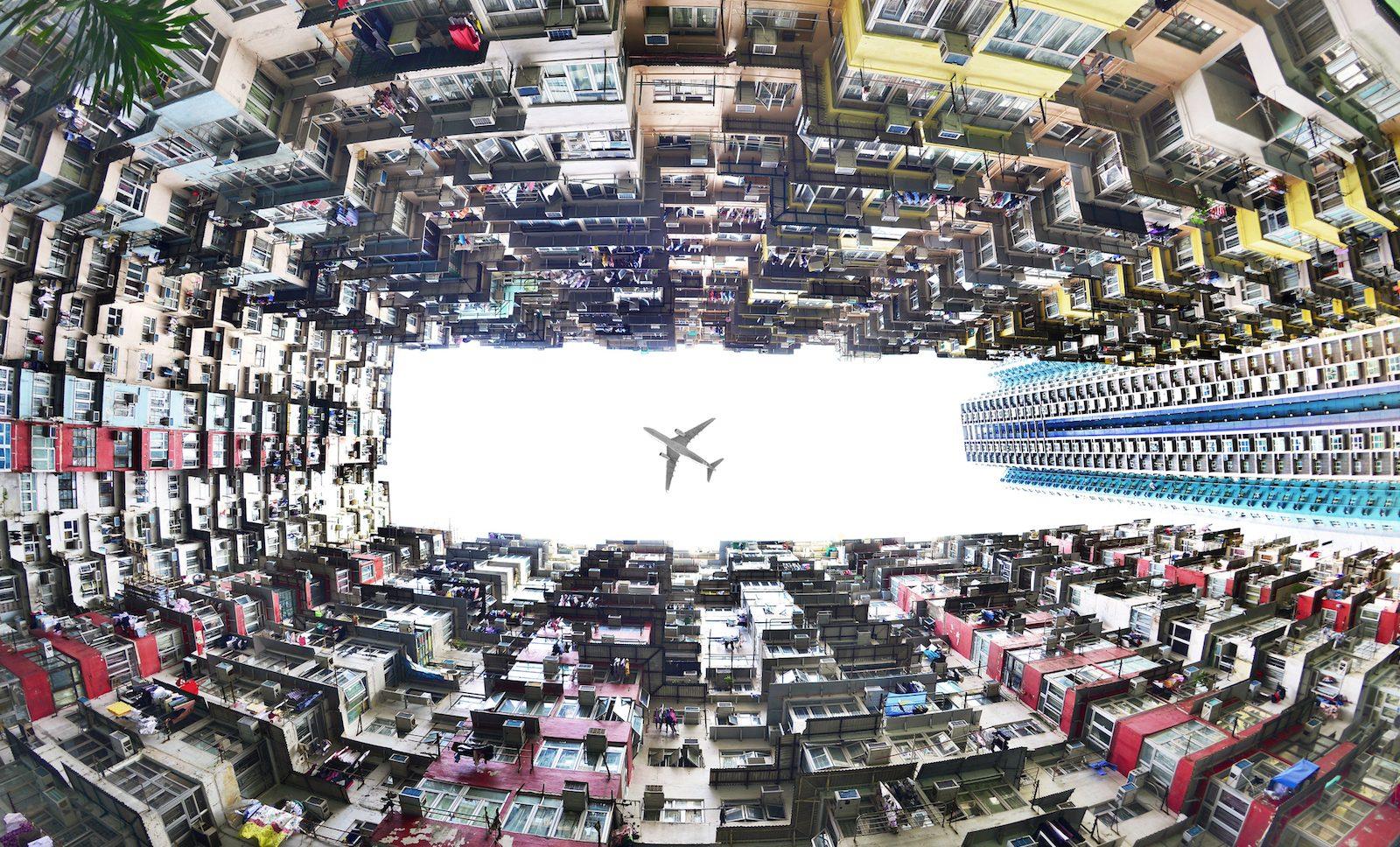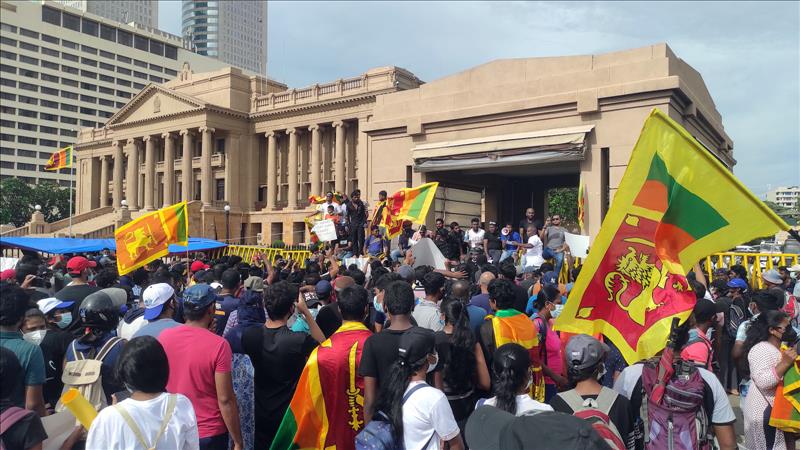Sri Lanka's Lost Revolution
Live-streaming on Twitter and YouTube, dissidents ransacked the presidential palace and celebrated in the streets as state security struggled to contain the masses.
Days later, news that Rajapaksa would resign seemed to confirm that the island nation's watershed moment for democracy had finally arrived. But two years later, that moment has seemingly passed and what remains is a regime that has learned the lessons necessary to survive.
The precise details of Sri Lanka's deteriorating political situation were recently presented before the UNHRC in Geneva. On March 1, the UN High Commissioner for Human Rights Volker Turk covered several regimes, including Colombia and Cyprus. But it was Turk's analysis of the conditions in Sri Lanka that were of particular interest.
“Two years ago, tens of thousands of Sri Lankans took to the streets demanding deep democratic reforms and accountability for economic mismanagement and corruption, which resulted in the most severe socio-economic crisis in a generation,” he told the assembled body.
Turk's somber acknowledgment of an opportunity wasted begs the question: What went wrong? A possible answer can be derived from an understanding of Sri Lanka's complicated past and even more uncertain future.
Since achieving independence from Great Britain in 1948, Sri Lanka has consistently struggled to attain its democratic promise. Located 150 miles south of India, Sri Lanka's modern history has been largely characterized by its colonial past.
Starting with the Portuguese and Dutch, its coastlines were highly valued for their strategic location during the age of exploration. This partition remained largely intact until the arrival of the British, who united the island under its control in 1815.
Sri Lanka's abundance of natural resources and fertile farmland allowed for advanced settlement and economic restructuring , including the establishment of large plantations that grew tea and coffee.
By the time Sri Lanka declared independence in 1948, national industry and political institutions had become largely defined by its British colonial past.
However, underneath the surface, tensions between the nation's Sinhalese majority and Tamil minority were brewing, an antagonism that eventually erupted into a devastating civil war that would last for a generation.
The origins of this conflict predate Sri Lanka's colonial history and can be attributed to a variety of socio-political factors. Beyond a stark difference in social and linguistic traditions, Sinhalese tended to be Buddhist, while Sri Lanka's Tamil population was predominantly Hindu.

Iran attack puts US back on Israel's side – for now

Why it's China's turn now

US to convert oil rigs into floating missile defense sites
Despite historically only making up 10% of the population, the island's Tamil minority grew in importance under colonial rule. The British, who had been familiar with the group based on previous experience in India, concentrated on the construction of schools and civic centers in Tamil communities.
Over time, this development led to widespread resentment among the Sinhalese majority, who would later seek to correct this perceived imbalance after independence.
In July 1983, following decades of political repression and relegation to second-class status, militarized elements of Sri Lanka's Tamil minority attacked various army units across the island. Using state records, the predominantly Sinhalese government retaliated by harassing Tamil households and communities, leading to widespread violence.
The Tamil Tigers, the primary militia group responsible for resisting the state, soon after embarked on a decades-long bombing and assassination campaign. This would be in conjunction with traditional combat operations on the ground, which would culminate in the seizure of several provinces in the north by separatist forces.
The conflict would continue until 2009 when the Sri Lankan government declared victory in the civil war after bringing the remaining independent Tamil communities under its control.
Although the nearly 30-year-long conflict was now over, the government continued its aggressive pursuit of domestic political opponents. In 2013, the BBC interviewed dozens of Tamil citizens who claimed that the government was still subjecting them to torture even after the conflict was over. One woman, identified as Vasantha by the publication, recalled one such incident specifically.
“On the last day, at about two in the morning, three people came and they blindfolded me again and handcuffed me. At that moment I thought they were going to kill me,” she told investigative journalist Frances Harrison. Documents from the hospital she was rushed to following her abduction corroborated her account of both physical and sexual abuse.
It's been over 10 years since that BBC report, yet the human rights situation in Sri Lanka remains critical. Following Rajapaksa's ouster in 2022, the government instituted a series of harsh security measures designed to discourage unrest.
The newly inaugurated President Wickremesinghe led the charge to strengthen the Prevention of Terrorism Act (PTA) , a draconian piece of legislation that effectively enabled detention and torture. The United Nations has also reported that human rights advocates are regularly harassed by local law enforcement, and are subjected to intimidation tactics.
The nationwide unrest that maimed Rajapaksa's administration in 2022 can be attributed to several key factors. In the years prior, two policy shifts had attracted widespread controversy among the public. First, irresponsible tax cuts designed to stimulate growth ultimately ballooned the deficit.
The second was a prohibition against synthetic fertilizer that crippled the state's agricultural sector, eventually leading to financial losses upwards of US$400 million and plummeting levels of rice and tea production.
Additionally, there were also longstanding human rights concerns that predated the 2022 protests. One such concern was the decades-old Muslim Marriage and Divorce Ac , which has long drawn criticism for its enabling of institutions such as child marriage.
It was this cluster of inequalities and systemic failings that led to the fervent demonstrations, affectionately remembered now as the People's Protest, or“aragalaya”, which flooded the Presidential Palace and unified the country in a way previously unseen.
For perhaps the first time in its history, Tamils, Muslims and the Sinhalese majority rallied behind a single cause: the betterment of their island home.
So how did a populist movement, so powerful it physically ousted the nation's chief executive, fail to achieve its most basic goals? In one word: organization.
Although thousands of Sri Lankans found common cause in the belief that both Rajapaksa's government, and the quickly deteriorating economy, must come to an end, there was little in the way of structure or leadership.
Some observers, such as Tamil Guardian editor Thusiyan Nandakumar, believe that the protesters were too focused on the wrong things.
“Failing to recognize the wider causes of the crisis, the movement also proposed no solutions for the island's financial turmoil or an envisioned governance structure going forward,” he wrote for the Diplomat in 2023.“The movement coalesced around a singular demand, one that didn't even call for Rajapaksa to be held accountable for his crimes. It was the lack of potency behind 'Go Home Gota' that weakened it.”
In reality, Rajapaksa's flight simply created a vacuum that established politicians in Colombo were eager and ready to fill. Lacking a unified agenda and consolidated leadership, protesters were at a loss in the crucial hours following the toppling of Rajapaksa's government.

Sign up for one of our free newsletters
- The Daily ReportStart your day right with Asia Times' top stories AT Weekly ReportA weekly roundup of Asia Times' most-read stories
That vacuum was quickly filled by Prime Minister Ranil Wickremesinghe, who wielded his power to bring an end to the domestic strife. His ironclad grip on power continues today and the effective combination of emergency declarations and security laws has for the moment eliminated all hope for democratic reform.
Today, all that remains is a sense of loss, particularly among democratic activists and the island's minorities who are intimately familiar with the oppressive nature of the state.
“The failure of the aragalaya will not come as a surprise to the island's Tamils, particularly the mothers of the forcibly disappeared, whose continuous protest has lasted far longer, but attracted far less attention from the global press.” Nandakumar would later reflec on the protests.
Many observers, such as human rights lawyer Swasthika Arulingam, have a hard time forgetting the failures of thearagalaya.
“But we have not achieved the long-term goals of aragalaya – like... no change in the political system, no accountability on corruption, and those who are responsible for stealing people's money are still in power,” she told the BBC in 2023.
The opportunity for reform that presented itself after Rajapaksa's expulsion was rare – and entirely wasted. The permanent democratic revolution which could have developed out of the ruins of Sri Lanka's semi-autocratic system was instead snuffed out.
It was this quiet, unceremonious end of a once-promising movement that should serve as a reminder for democratic protesters everywhere. The first step towards toppling an autocratic government must be designating its democratic replacement.
Caleb M Mills is a research assistant at Purdue University studying behavioral and ideological trends among non-state and state actors and a resident assistant with the South China Sea Newswire. His work has been featured in the Geopolitical Monitor, International Policy Digest and RealClearPolitics, and was recently cited in Anatol Lieven's recent book 'Climate Change and the Nation-State' published by Oxford University.
Thank you for registering!
An account was already registered with this email. Please check your inbox for an authentication link.

Legal Disclaimer:
MENAFN provides the
information “as is” without warranty of any kind. We do not accept
any responsibility or liability for the accuracy, content, images,
videos, licenses, completeness, legality, or reliability of the information
contained in this article. If you have any complaints or copyright
issues related to this article, kindly contact the provider above.
Most popular stories
Market Research

- Brazil Edtech Market Size, Share, Trends, And Forecast 2025-2033
- Vietnam Vegan Food Market Size, Share, Trends And Report 2025-2033
- Cryptogames Introduces Platform Enhancements Including Affiliate Program Changes
- Accounting And Bookkeeping Service Business Plan 2025: How To Start, Operate, And Grow
- USDT0 And Xaut0 Are Now Live On Polygon
- Global Open Banking Market 20252033: Services, Deployment & Distribution Trends






















Comments
No comment